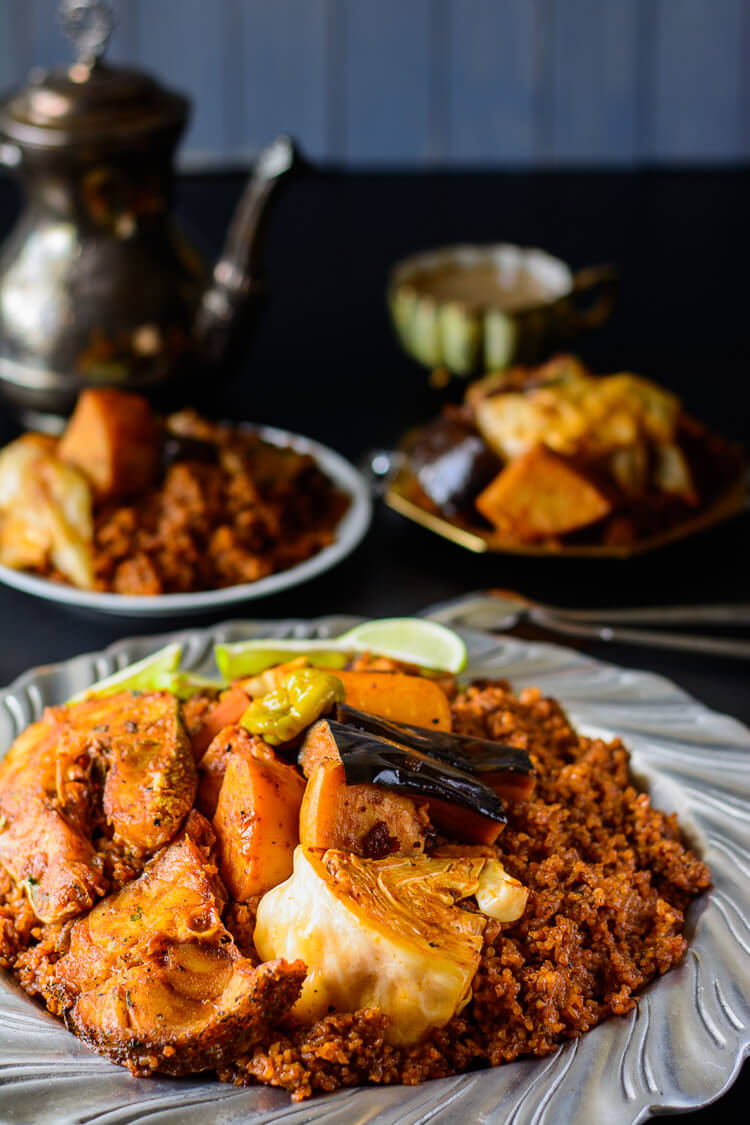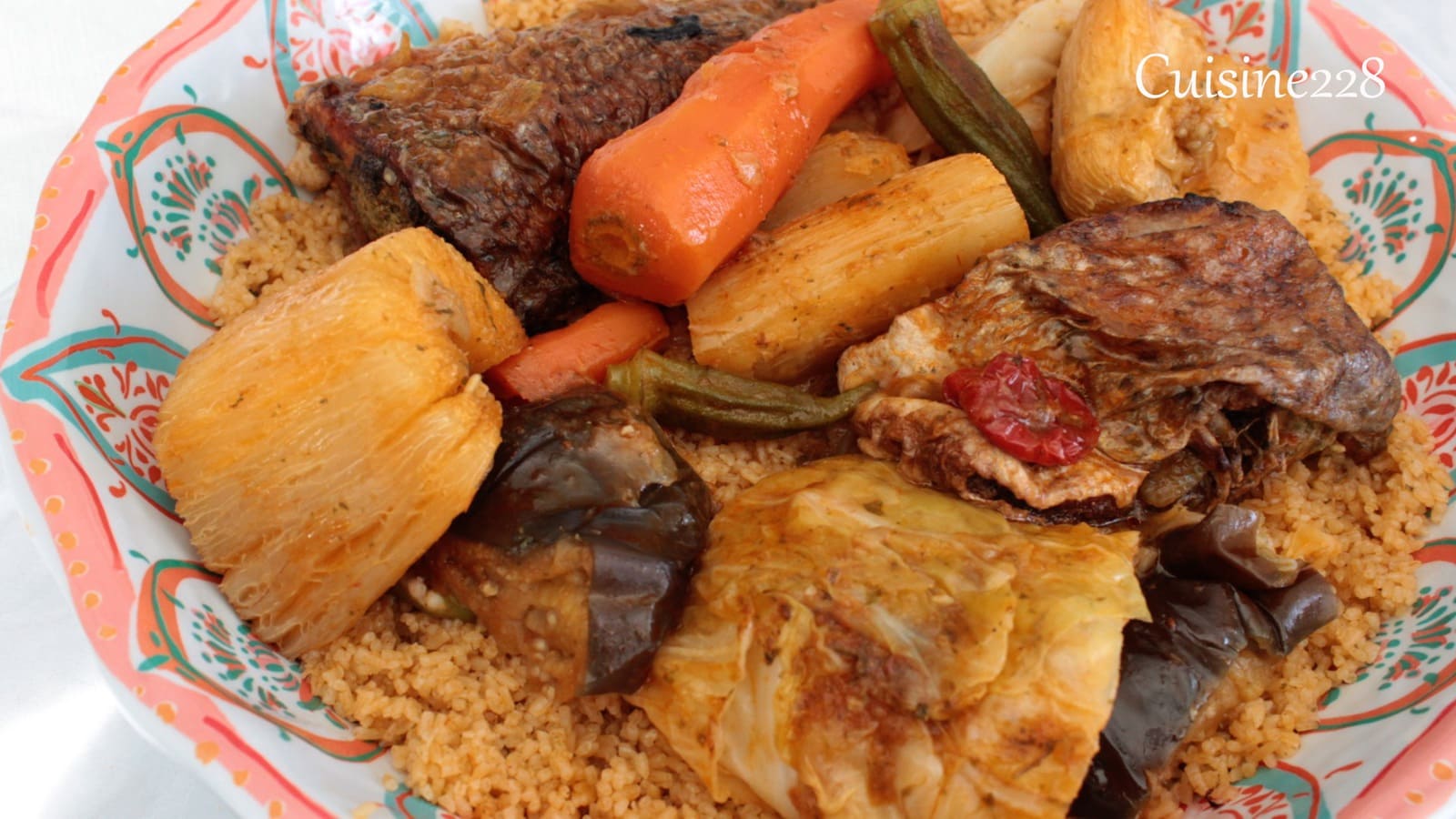Thieboudienne
thiebou jen, thiep bou dien, tchieboudienne, chebu jen, thiebu djen, ceebu jen, poisson au riz
Tiep is a traditional dish from Senegal and an intangible cultural heritage of humanity that is also consumed in Mauritania, Guinea-Bissau, Guinea, Mali, The Gambia, and other West and Central African countries. It is the national dish in Senegal. The version of tiep called thieboudienne, Ceebu Jën or chebu jen (Wolof: ceebu jën; French: thiéboudiène) is prepared with fish, broken rice and tomato sauce cooked in one pot. There are also tiep yappa (with meat) and tiep ganaar (with chicken). Additional ingredients often include onions, tomatoes, carrots, cabbage, cassava, hot pepper, lime and peanut oil, and stock cubes. Historically, tiep is commonly attributed to the city of Saint-Louis, in the nineteenth century. The name of the dish comes from Wolof words meaning 'rice' (ceeb) and 'fish' (jën). In Pulaar it is known as maaro e liddi ('rice and fish'). It is served on large trays with the rice on the bottom and the fish, usually white grouper (Epinephelus aeneus), and the vegetables, many of them whole, placed in the center. The collapse of white grouper fisheries has reduced access to the dish.
Source: Wikipedia
Recipes

Thieboudienne: Senegalese Jollof Rice and Fish - Yummy Medley

Thieboudienne - Authentic Recipe from Senegal | 196 flavors

Recipe Series: Thiéboudienne | Traditional African Cooking — Hampton Roads + Virginia Wedding Photographer | Maria Grace Photography













